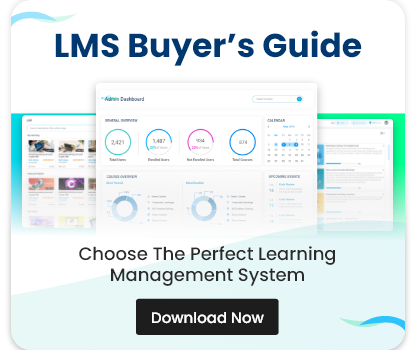When you’re responsible for employee training or managing learning programs, budget is often the first big challenge. Paid Learning Management Systems (LMS) can deliver robust features—but their price tags can be intimidating, especially for small businesses, startups, or nonprofits. This is why many training managers and HR leaders explore the advantages of free LMS software before making an investment.
But while a free LMS can be a smart way to launch your training program, it’s not a perfect fit for every organization. Understanding both the strengths and the drawbacks will help you make a confident decision. Let’s dive into the advantages and limitations of free LMS software, so you can see how it might work in your unique situation.
Start Scaling Your L&D Today with Free Tools
Unlock the Potential of Free Tools to Revolutionize Your Learning Strategy!
Why Organizations Consider Free LMS Software
If you’re looking for an affordable way to deliver training, it’s easy to see the appeal. Free LMS platforms allow you to experiment with online learning without committing to large upfront costs. But before you get too excited, it’s worth weighing both sides of the equation.
Advantages of Free LMS Software
A free LMS isn’t just about saving money—it can actually provide real strategic benefits when used wisely. Here are the biggest advantages:
1. Cost Savings That Free Up Your Budget
Example: A small e-learning consultancy can use a free LMS to host onboarding courses without paying thousands in subscription fees. That budget can instead go toward video production or interactive content that keeps learners engaged.
2. Ideal for Testing and Pilots
3. Flexibility and Open-Source Freedom
Many free LMS options—especially open-source platforms—give you complete control over customization. Your IT team can tailor the platform’s look, functionality, and integrations to meet your organization’s unique needs.
Example:- An IT training firm might customize an open-source LMS to include advanced coding assessments or integrate with their internal HR tools.
4. Community Support and Collaboration
Free LMS platforms often have active user communities where administrators share best practices, templates, and troubleshooting advice. This can be just as valuable as paid technical support when you’re willing to tap into collective expertise.
These communities often create plugins or add-ons that enhance the platform—another hidden benefit of choosing open-source free LMS software.
5. Lower Barriers for Startups and Nonprofits
For startups or nonprofits with tight budgets, the advantages of free LMS software are hard to ignore. It provides a way to start delivering structured training immediately—whether it’s onboarding new hires, training volunteers, or running compliance programs—without waiting for extra funding.
🚀 Ready to See Paradiso LMS in Action?
Let's show you how Paradiso LMS can work for you.
🎯 Get a Free LMS NowLimitations of Free LMS Software
1. Limited Features Compared to Paid Platforms
Free versions often provide only basic functionality. Advanced analytics, AI-driven recommendations, or deep integrations with HR or CRM systems may be locked behind a paid plan.
2. Higher Maintenance and Technical Expertise
Open-source LMS platforms require technical knowledge to set up and maintain. If you don’t have an internal IT team, you may need to hire external developers, which can offset the initial cost savings.
3. Scalability Concerns
What works well for a team of 50 employees might not hold up when your company grows to 500. Free LMS software can struggle to handle large volumes of users, complex reporting, or global training needs.
If you’re planning for significant growth, it’s important to evaluate whether the platform can scale without performance issues—or whether you’ll need to migrate later.
4. Limited or No Dedicated Support
Free platforms rarely provide guaranteed technical support. Instead, you might have to rely on forums, documentation, or slow email responses.
5. Potential Hidden Costs
While the software itself is free, there can be indirect costs for customization, hosting, or data security. If you need to hire developers or invest in hosting services, the expenses can add up.
How to Decide if a Free LMS Is Right for You
The advantages of free LMS software can be significant—but only if it aligns with your organization’s goals. Here’s a simple framework to help you decide:
Step 1: Define Your Training Goals
Are you onboarding employees, running compliance courses, or offering customer education? The type of training will determine what features you need.
Step 2: Evaluate Internal Resources
Do you have an IT team capable of managing an open-source LMS? If not, consider a free hosted platform with strong community support.
Step 3: Plan for Growth
Step 4: Test with a Pilot Program
Start small. Run a pilot training session with a free LMS and collect feedback from both learners and administrators.
Real-World Example: A Nonprofit’s Success Story
A mid-sized nonprofit needed to train 200 volunteers annually but had no budget for a paid LMS. They chose an open-source free LMS and worked with a freelance developer to customize it for their needs.
Discover a Free LMS’s true potential-Know the pros and cons!
Maximize training impact with the right LMS – Start your free journey today
Key Takeaways
- Advantages: Cost savings, flexibility, community support, and a low-risk way to pilot eLearning.
- Limitations: Limited features, scalability challenges, technical complexity, and potential hidden costs
The right choice depends on your resources, goals, and growth plans.















